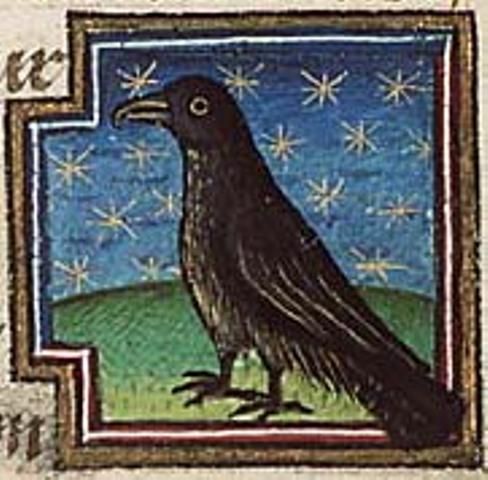















Battle of Camlann
The final battle of King Arthur.
The first mention of Camlann is in the Annales Cambriae, which dates it to 537 (some reckon it 539), the same year a plague broke out across the isles. The text says:
"Gueith camlann in qua arthur et medraut corruerunt, et mortalitas in brittannia et in hibernia fuit."[The] Battle of Camlann in which Arthur and Medrawt fell, and there was a plague in Britain and Ireland."
It's unclear whether Arthur and Medrawt (Mordred) were fighting each other, or someone else; for that we turn to Geoffrey of Monmouth. According to Geoffrey, Mordred had been entrusted with the kingdom while Arthur battled the Romans; he usurped the throne, employing Saxon mercenaries. Arthur hears of this, returns, and harried Mordred to Cornwall, to the river Cambula (probably the Cam, near Cadbury), where they are both mortally wounded; Geoffrey then has Arthur carried off to the Isle of Avalon to be healed, and passes the crown to Constantine son of Cador. Finally, Geoffrey, in one of the few concrete dates in his book, places the battle in 542.
On identifying Camlann with Cornwall, Wace, La3amon, and the Alliterative Morte have it either along the Cam River, or the Tamar, both in Cornwall.
Welsh Tradition
There is no clear concensus in Welsh tradition as to the cause of the battle.
The Triads mention the Battle of Camlann, but give differing reasons for its cause. In one triad, #51 in Bromwich, the cause follows that of Geoffrey's explanation. In #53, it is caused by Gwenhwyfach striking her sister Queen Gwenhwyfar; oddly, #54 has Mordred eating all the food in the castle and attacking Gwenhwyfar by throwing her out of her throne. The relationship between these triads isn't entirely clear.
In Breudwyt Ronabwy, Rhonabwy dreams he is in the time of Arthur, where his guide is Iddawg, who claims to have started the battle of Camlann by not giving Mordred a message of truce from Arthur. However, in the dream the battle hasn't happened yet, and instead Arthur and his forces are gathered for the Battle of Mount Badon. Such is the logic of dreams.
Camlann in Romance
If we accept that the Modena Perceval text is a prose version of Robert de Boron's lost Roman du Graal, then this would be the first Continental text, and the first text not to mention Camlann as the site of Arthur's final battle. Instead, Ireland is identified, which has no parallel in the other French texts. He is born away to Avalon, as in Geoffrey, but is reported to be seen occasionally in the forests of Britain with his hunting dogs.
The next mention of Camlann not based on Geoffrey's account is in the Lancelot-Grail (or Vulgate) Cycle, where Mordred is Arthur's son, and attempts to force Guenevere to marry him. Arthur discovers this, returns to Britain, and, as in other texts, Mordred flees west. There is a battle on Salisbury Plain, and Arthur is carried off to a chapel, where he commands Sir Griflet to throw Excalibur into a nearby lake. After deliberation, this task is finally completed, and Griflet sees Arthur lead away on a boat by three women; he finds Arthur's tomb at the chapel.
Malory's version is largely the same, though it is Bedevere who throws the sword. He also has the battle on Salisbury Plain, not mentioning the name of Camlann.

Back to "C" | Back to JCE
Home
Mary Jones © 2007